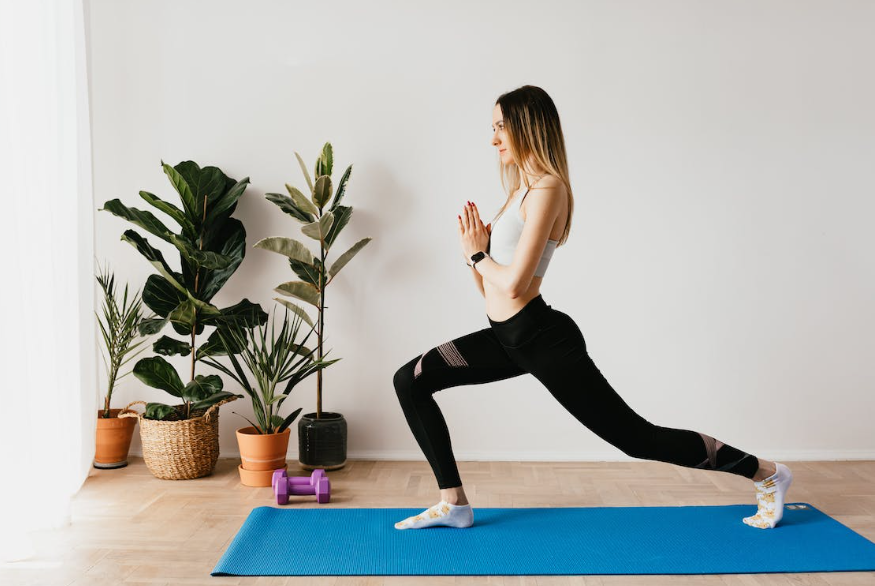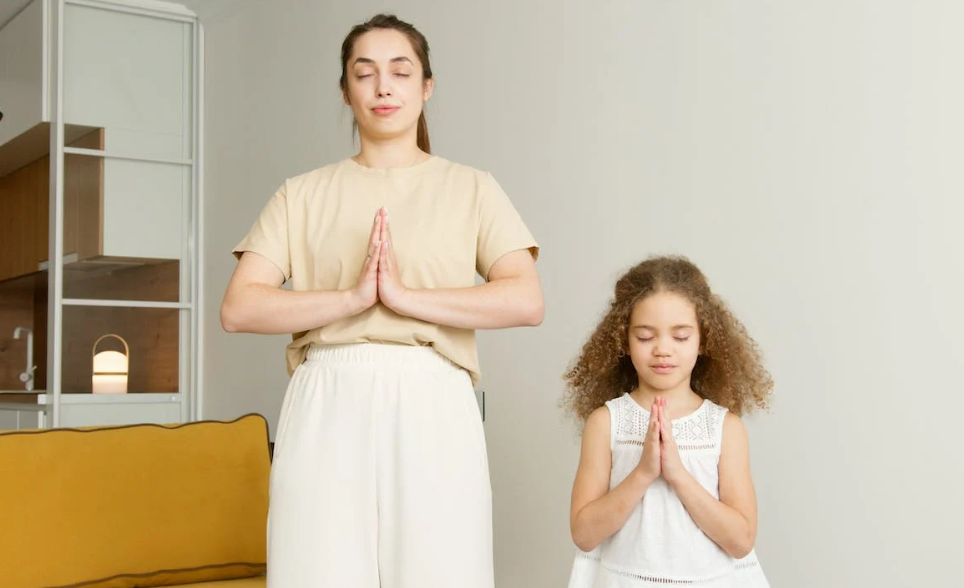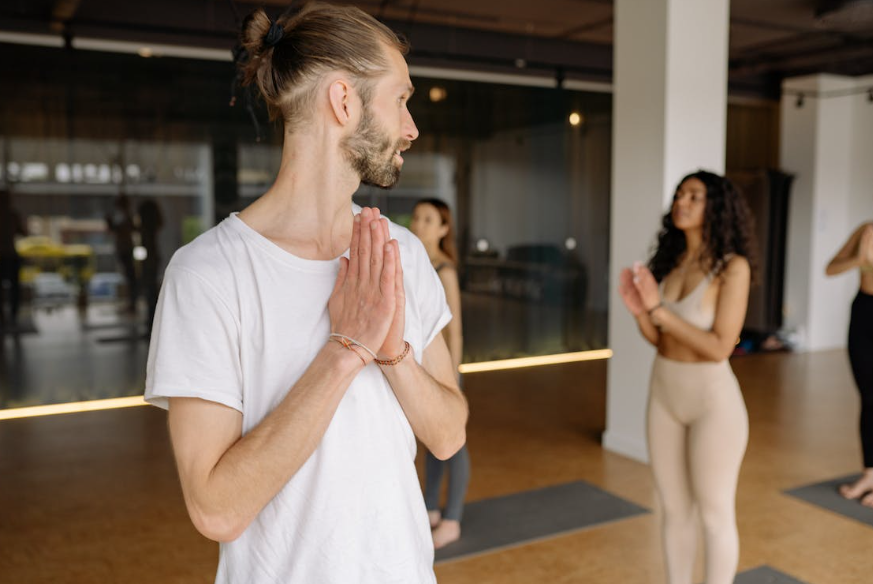Mindfulness or Prayer
In this article, we’ll discuss the marvelous benefits of meditation and prayer for those suffering with anxiety. Prayer and meditation provide stress reduction, improved health and other benefits, including improved thinking and emotional wellbeing. Tips to help implement more prayer and meditation in your life are provided.

Selfpause Affirmation App
Download the app to get 1,000’s of affirmation meditations and everything you need to write, record and listen to your own.
When it comes to spiritual practice, meditation or prayer is one of the best ways to connect with your Higher Power. These techniques are practiced in different ways across different cultures and faiths. Though people practice them differently, meditation is universal, transcending the differences in style and beliefs. The main goal of meditation is to achieve peace of mind, inner peace, and spirituality.
Meditation

Practicing both meditation and prayer is a great way to increase awareness and strengthen your spiritual connection to God. Meditation is the act of taking charge of your mind, while prayer is the action of seeking a higher power. Both practices are based on the same tenets: to open yourself up to the possibilities of life and to be present in the present moment.
In order to start meditating, you need to set aside a quiet space where you can be alone and free from worries. Usually, you’ll need at least fifteen to thirty minutes to do this. It’s a good idea to tell family members and loved ones that you’ll need this time to reflect. It’s important to find a quiet room where you can avoid distractions, but not so quiet that you fall asleep. One of the most difficult aspects of meditation is quieting your mind. However, this is not the same as emptying your mind, which is a different goal.
One method of meditation involves using images and words to help you find a sense of connection with the Divine. The goal of meditation is to reach a point of unity within yourself. This can be achieved by focusing on the in and out of each breath. By doing so, you can become well versed in your own nature, spirit, and psyche.
Prayer

The practices of meditation and prayer are similar in that both seek to attain deep peace and connect to a higher power. Both practice deep breathing and meditation to calm the mind and release tension. Both involve visualization of deities or other entities. However, they differ in their approach and use. They are often performed in tandem.
Regardless of religious background, both techniques can benefit the practitioner. Meditation promotes mindfulness, which is the ability to engage in the moment without distractions. It can also be practiced while doing other activities, like washing the dishes or taking a shower. Similarly, prayer focuses on communication with a higher power and lifts the practitioner out of self to become immersed in the love of a chosen deity. For many people, prayer is a powerful healing practice and can provide profound benefits.
Mindfulness and prayer are often combined, with the goal of creating an environment where Christians can focus on God and experience His Holy Spirit. These practices help transform people into His likeness. However, different people experience the benefits differently. For some, they need a dedicated time to pray, while others may benefit from meditation at any time.
Mindfulness

Praying is a very powerful practice that allows you to be in tune with the divine. Whether you are reading the Bible or praying aloud, prayer is a great way to connect with God and gain a sense of calm and peace. The act of praying brings about a change in our lives, transforming us into more like Christ.
Many people use mindfulness as a way to meditate, and it can be a powerful tool to use when praying. However, some conservative religious traditions are opposed to it, believing that it contaminates prayer. However, the practice of mindfulness has many benefits for secular people as well, including its ability to improve mental health.
Mindfulness has been used to explore the relationship between the Christian faith and Buddhism. However, they are two very different practices, and Christians and Buddhists have different ideas about God and the universe. In the Middle Ages, the medieval mystics, for instance, incorporated Buddhist techniques and nondual neo-Platonism into their spiritual practice. In addition to embracing Buddhist practices, Christianity also embraces some of the principles of mindfulness.
Mindfulness meditation involves sitting in a quiet place and focusing on breathing for at least 10 minutes. This can be difficult for beginners, but after a while, you will be able to experience concrete results. Prayer is a way of communicating with a higher power and can be very powerful in healing some people.
Meditative mystical practice

Meditative mystical practice and mindfulness or praying can both benefit individuals. However, these practices have some differences. For example, most mystics are engaged in learning and skills acquisition, while some aim to produce personal transformations. In the case of Confucianism, for example, mystic practices focus on cultivating sagehood, while in fourteenth-century Roman Catholic meditations on the Passion of Christ, the aim is to reform the soul. In early English Methodism, the goal was to achieve sanctification, the state of being so free of temptation that virtue is almost effortless.
In the Buddhist tradition, meditative practice is divided into two types: vipassana, or insight, and samatha, or calm abiding. In both techniques, the mind is focused on the breath and the experience of the breath, which calms it and allows the practitioner to examine the nature of reality and experience. Both techniques aim to bring the practitioner into contact with the Divine.
In the context of religions, mysticism is an important area of convergence. Meditation is a key gateway to this mystical world, enabling the practitioner to shift from the rational left brain to the intuitive right brain, and to descend into various levels of cosmic consciousness. In the process, meditation reveals that all faiths worship the same God, which is the Universal Source of Wisdom.
Common forms of meditation

There are many types of meditation and prayer. Some have religious implications, while others are purely spiritual. Whatever the form, both require focusing on the breath and an intention. Both practices are very beneficial for deeper communion between you and your Creator. Meditation is a great way to increase your self-awareness and reduce stress.
Many forms of meditation and prayer originated in Christianity, although not all of them are accepted by all churches. The Desert Fathers, who practiced a withdrawn life, provided the foundation for Christian meditative practices. They taught repeating prayers and synchronized breathing techniques. In addition, Eastern Orthodox and Jesuit traditions use icons or scenes of Christ as a focal point for meditation.
Both meditation and prayer involve focusing on the present moment. While prayer may focus on changing your world, meditation is focused on nonjudgmental observation of the world. Both methods are equally effective at developing our awareness of the present moment. These practices can be used in conjunction with each other to create a holistic mindfulness practice.
Benefits of meditation

People who practice meditation and prayer benefit from an array of positive effects. Not only does it promote mental clarity, it reduces stress, improves self-regulation, and boosts happiness. Whether you are religious or not, meditation and prayer have proven to be effective for many individuals. Though these practices may take some time to master, they can be a great benefit to your well-being.
Meditation is a process of removing distractions and focusing attention on the present moment. It can be practiced in several different ways, including focusing your attention on a single object, an image, a mantra, or breathing deeply. When practicing meditation, try to focus your attention on deep, even breathing, using the diaphragm muscle to expand the lungs. This type of breathing also reduces the use of the upper chest and shoulder muscles.
Practicing meditation allows you to connect with others. Unlike traditional methods, meditation doesn’t require judgment. The practice of meditation can be done anywhere, whether at home, in a public space, or while traveling. Meditation is especially helpful when you’re stressed and overwhelmed. It also allows you to expand your focus to multiple areas of your life.
Ways to practice

Meditation is a technique for learning to be fully present in the present moment. The practice of mindfulness involves being kind and forgiving to oneself, and gently redirecting one’s mind away from negative thoughts and sensations. Mindfulness can also be practiced when one is performing a daily task, such as washing dishes or taking a shower. Another technique is prayer, which involves communicating with a higher power. Prayer helps one to step out of oneself and become more connected to the deity of their choice. It can be an effective healing tool for some people.
To begin practicing mindful prayer, simply sit quietly and focus on breathing deeply. You may also want to use a mantra. You can also try to identify each part of your body, from your toes to your head. While you are observing your body, you can also name the sensations you are feeling, including any negative ones.
Another way to practice mindfulness or prayer is through reading the Bible. Bible reading has many of the same benefits as meditation, and can even help you focus on God more directly.
Our Top FAQ's
Some of the benefits of meditation and prayer include reduced stress and anxiety, improved emotional well-being, increased self-awareness and mindfulness, enhanced focus and concentration, and improved physical health.
Meditation and prayer can improve mental health by reducing stress and anxiety, promoting relaxation, and increasing self-awareness and mindfulness. These practices can also help to improve mood and reduce symptoms of depression.
Studies have shown that meditation and prayer can have physical health benefits as well. For example, meditation has been shown to lower blood pressure, improve sleep, and reduce symptoms of chronic pain. Prayer has been shown to have a positive impact on immune function and may also help to reduce the risk of certain health conditions such as heart disease and cancer.
To start a meditation or prayer practice, you can try setting aside a specific time each day to practice, choosing a comfortable and quiet location, and following a guided meditation or prayer. It’s also helpful to be consistent and to try to practice regularly.
There are generally few negative effects associated with meditation and prayer, and these practices are generally considered to be safe. However, some people may find that they have difficulty sitting still or focusing during meditation, and they may become frustrated or discouraged. It’s important to be patient and to try different techniques or approaches until you find what works best for you. It’s also important to remember that meditation and prayer are personal practices, and what works for one person may not work for another.
